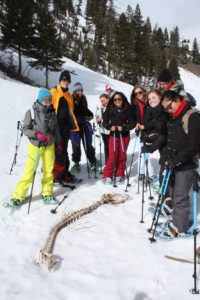Secrets to Snagging Great Science Partners

To view the photo-rich magazine version, click here.
Originally appears in the Fall 2017 issue
by Jessica Zephyrs
When Duane Gray began teaching seventh grade at Russell Reid Elementary in Brantford, Ontario, more than 22 years ago, he was shocked by his students’ disconnection from nature.
“They spent all their time in a suburban or city setting. They couldn’t appreciate what was going on with nature–they had no understanding of it, no vocabulary for it. Even the schoolyard was too sterile. I had problems making citizen science work for them. At some point, I got an email from Bird Studies Canada, talking about their citizen science project, and it fit. I needed something the kids could see wherever they went, and birds were it. Now I’ve been working with them [Bird Studies Canada] for ten years.”
Duane’s partnership with Bird Studies Canada1 started with a simple package of teacher resources, centering on the idea that each student become an expert on one bird species in their area. But the resulting science projects have made such an impact on his students that he’s incorporated environmental education into nearly all of his subjects. His seventh graders write a comparison study on their species, they build bird houses together and calculate the surface area, and they each read a chapter of Strange Companion — a book about whooping cranes on the verge of extinction — and discuss with their peers what they learned from the book.
“It’s a way [through reading and writing] to show them how scientists share specific information with the greater community, so that the specifics of each story from all the scientists come together to form the story of what’s happening in our world.”
This content is restricted to subscribers only.
If you are not yet a subscriber, please consider taking out a subscription here.
If you are an existing subscriber, kindly log in or contact us at info@greenteacher.com for more information.





